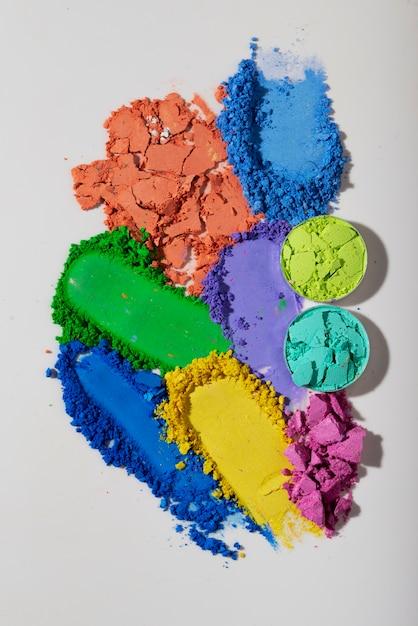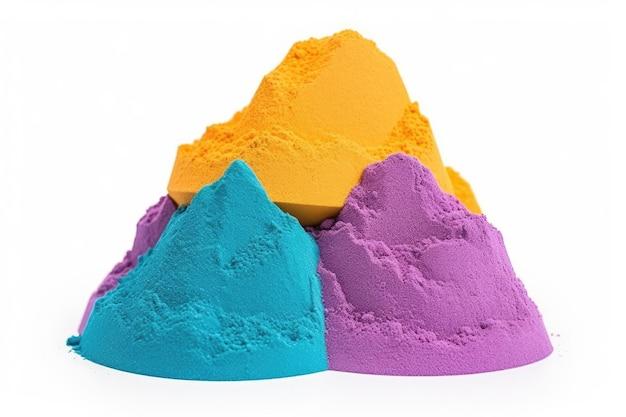Have you ever wondered about the color of clay? Clay is a unique material that can vary in color depending on various factors. In this blog post, we will explore the different colors of clay, including its natural color and the colors it can be transformed into through different processes.
Clay is commonly associated with a reddish-brown color, reminiscent of terracotta pottery. However, this is just one of the many colors that clay can exhibit. Clay is found in nature in various hues, including gray, white, yellow, and even blue. The color of clay is primarily determined by the minerals and impurities present in the soil where it is formed.
In this blog post, we will delve into the characteristics of different clay colors, their significance in ceramics and pottery, and how different types of clay are used for clay art. So if you’re curious about the color of clay and want to expand your knowledge about this versatile material, keep reading!
What Is the Color of Clay
Clay, the versatile material used in pottery and construction, comes in a wide array of colors. From vibrant reds to earthy browns, the color of clay can vary depending on various factors and types of clay deposits. In this subsection, we will explore the captivating world of clay colors.
The Palette of Nature’s Artistry
Different Shades, Different Origins
Clay owes its color to a variety of minerals present in its composition. The geographical location and the types of minerals found in the local soil can greatly influence the color of clay. For instance, red clay gets its hue from iron oxide, while white clay has a high concentration of kaolin. Yellow clay, on the other hand, contains iron and manganese oxides, giving it a sunny appearance.
The Reds of Terra Cotta
When you think of clay, one color that likely comes to mind is a warm earthy red. This iconic hue, reminiscent of Mediterranean roofs and ancient pottery, is commonly known as terra cotta. The red color is caused by the presence of iron oxide, which can range from light orange to deep crimson, depending on the clay’s composition.
The Beauty of Beige and Brown
Clay also exhibits a range of beige and brown shades, adding a natural touch to pottery and architectural designs. These colors are a result of the organic matter, such as decomposed plant material, mixed with the clay during its formation. The varying levels of iron oxide, as well as other minerals, contribute to the array of beige and brown hues found in clay.
The Subtlety of Gray
Gray clay might not be as attention-grabbing as its fiery red or soothing beige counterparts, but it carries its own charm. Gray clay often consists of a mix of minerals like iron, magnesium, and manganese, creating a cool and tranquil color. Gray clay is highly versatile, making it an excellent choice for a wide range of applications, from ceramics to construction.
The Rarity of Blue Clay
While some might argue that blue clay exists only in the realm of myth and legends, certain regions do boast the presence of this mystical hue. Blue clay is a rare find, usually occurring in locations where underground minerals or volcanic ash have interacted with clay deposits. The striking blue shades, ranging from pale turquoise to deep navy, make blue clay a highly sought-after material for artistic and decorative purposes.
Clay’s color palette offers an artistic range of possibilities when it comes to pottery, architecture, and artistic endeavors. From the warm reds of terra cotta to the subtle and cool grays, each color holds its own unique appeal. So, whether you’re envisioning a vibrant masterpiece or a serene structure, the color of clay will undoubtedly bring your creative visions to life.
FAQ: What Is The Color of Clay
Welcome to our comprehensive FAQ-style subsection all about the color of clay! From different types of clay to its natural appearance, we’ve got all the information you need to understand the diverse world of clay colors. So, let’s dive right in!
What are the 5 types of clay
When it comes to types of clay, there are five main categories you’ll commonly come across:
-
Earthenware: This is a low-fire clay that is often red or buff in color.
-
Stoneware: A high-fire clay known for its durability and wide range of colors, including grays, browns, and blues.
-
Porcelain: A beautiful white clay fired at high temperatures. It’s often used for delicate and translucent pottery.
-
Ball clay: A fine-grained clay commonly used in ceramics for its plasticity. Its color can range from white to gray.
-
Kaolin clay: Also known as China clay, it’s a white clay used in porcelain production.
What does grey clay mean
Gray clay typically refers to stoneware clay, which is fired at high temperatures. The gray color is a result of the minerals present in the clay body. Gray clay offers a versatile palette for pottery, allowing for a wide range of creative expression.
Which clay is used for clay art
Various types of clay can be used for clay art, but stoneware and porcelain are the most popular choices. Stoneware offers a wide range of colors and excellent durability, while porcelain offers a smooth white surface ideal for intricate designs.
What are the five characteristics of clay
Clay possesses five essential characteristics that make it unique:
-
Plasticity: Clay can be molded and shaped easily, thanks to its plastic nature.
-
Porosity: Clay has tiny spaces within its structure, allowing air and moisture to pass through.
-
Shrinkage: When clay dries or is fired, it contracts and shrinks in size. This characteristic needs to be considered during the crafting process.
-
Fusibility: Clay can fuse together when fired at high temperatures, making it a versatile material for creating durable ceramics.
-
Texture: The texture of clay can vary, ranging from smooth to rough, depending on the minerals present.
What are the 4 types of clay
The four main types of clay are earthenware, stoneware, porcelain, and ball clay. Each type has its unique characteristics and uses in the field of ceramics.
What is the strongest clay
Stoneware clay is typically considered the strongest type of clay due to its high firing temperature. It produces durable ceramics that can withstand everyday use and is a popular choice among pottery enthusiasts.
What’s red clay called
Red clay is commonly known as terracotta. It gets its distinct reddish color from the iron oxide content within the clay. Terracotta has been used throughout history for creating pottery, sculptures, and architectural elements.
How do you make gray clay in real life
To make gray clay in real life, you can mix various pigments or oxides with white or buff-colored clay. Experimenting with different combinations and firing temperatures can help achieve the desired shade of gray.
What type of clay is gray
Gray clay is typically stoneware clay. It can be found in nature, or artisans can add minerals and elements to achieve the desired gray hue.
What does clay look like in nature
In its natural state, clay appears as a soft and fine-grained sediment. Its color varies depending on the mineral composition, ranging from white and beige to red, brown, and even gray.
Is Terracotta a clay
Yes, indeed! Terracotta is a type of clay that’s known for its reddish-brown color. It has been used for centuries in the creation of pottery, tiles, and decorative objects.
What are the ideal qualities of clay
The ideal qualities of clay for ceramics include good plasticity, low shrinkage, suitable porosity, and the ability to withstand high firing temperatures without cracking or warping.
What is the difference between terracotta and clay
While the term “clay” refers to the general category of natural earth material, terracotta specifically refers to clay with a reddish-brown color. In essence, terracotta is a type of clay.
Which clay is best for pottery
When it comes to pottery, stoneware clay is often considered the best choice. It offers durability, a versatile range of colors, and a medium firing temperature that suits a wide variety of pottery techniques.
Is red clay the same as terracotta
Yes, red clay and terracotta are synonymous terms. Both refer to clay with a distinctive reddish hue, making them excellent choices for pottery and other ceramic creations.
How do you get clay in real life
Clay can be found naturally in various places, such as riverbanks, deposits near bodies of water, or even in your own backyard. Once sourced, the clay is often refined and processed before being used for ceramics.
Is clay grey a color
Gray clay can indeed be considered a color. While gray itself is often seen as an intermediate shade between black and white, gray clay adds a touch of sophistication and versatility to pottery.
What are the 10 types of soil
While clay is a component of soil, the ten recognized soil types are sandy loam, silty loam, clay loam, sandy clay, silty clay, peaty soil, loamy soil, sandy soil, chalky soil, and clay soil, each with its unique properties.
What is gray clay good for
Gray clay, or stoneware clay, is excellent for creating a wide variety of pottery. Its versatility in color allows for beautiful and unique ceramic pieces, while its strength ensures durability.
What are the different colors of clay
Clay can appear in various colors, including white, beige, gray, red, and brown. These colors are influenced by the presence of different minerals and elements within the clay composition.
What Color is clay soil
Clay soil commonly varies in color, ranging from a pale grayish hue to a reddish-brown or even black. The exact color depends on the specific mineral content and organic matter present in the soil.
Where is clay found in nature
Clay can be found naturally in abundance worldwide. It is often discovered in sedimentary layers near bodies of water, riverbanks, or areas with volcanic activity. However, clay deposits can be found in numerous geographical locations.
What color is primary clay
Primary clay typically appears in a variety of colors, including white, beige, and gray. The absence of iron oxide gives primary clay its lighter hues compared to secondary clay, which often contains minerals contributing to a reddish color.
What three things does a clay body consist of
A clay body consists of three main components:
-
Clay: The primary ingredient, which provides plasticity and workability.
-
Flux: A material that helps lower the clay’s melting point during firing, aiding in fusion and vitrification.
-
Filler: Also known as a temper, it adds strength and stability to the clay body, reducing shrinkage and cracking.
And there you have it—all your burning questions about the color of clay answered! Armed with this newfound knowledge, you can now appreciate the beauty and variety of clay colors in the world of ceramics. Start experimenting with different types of clay and let your creativity shine!

